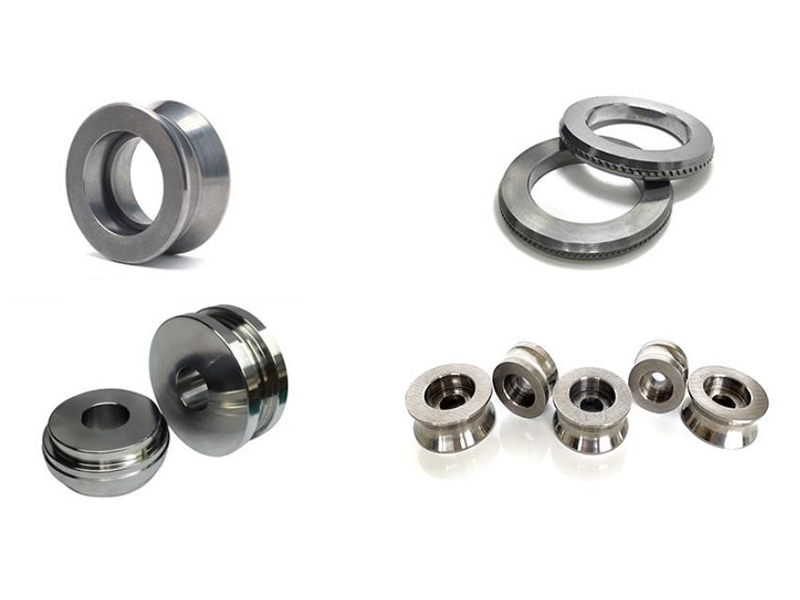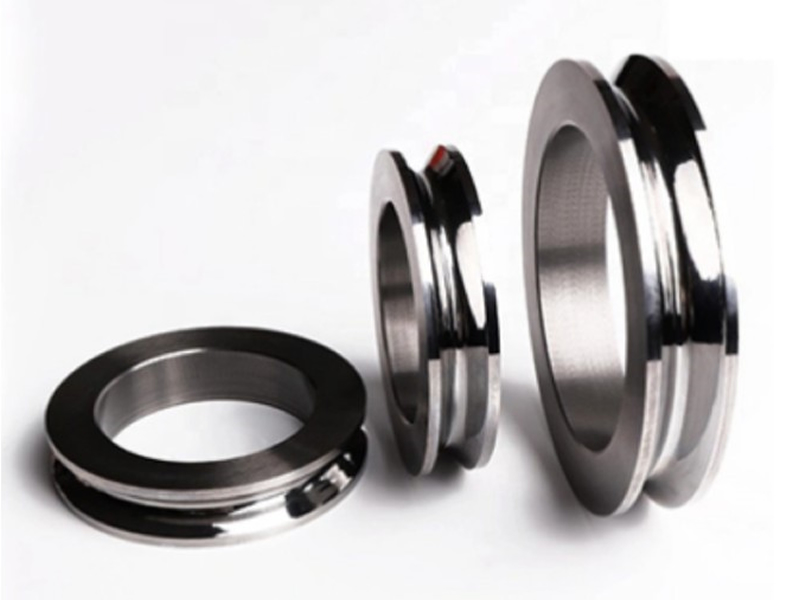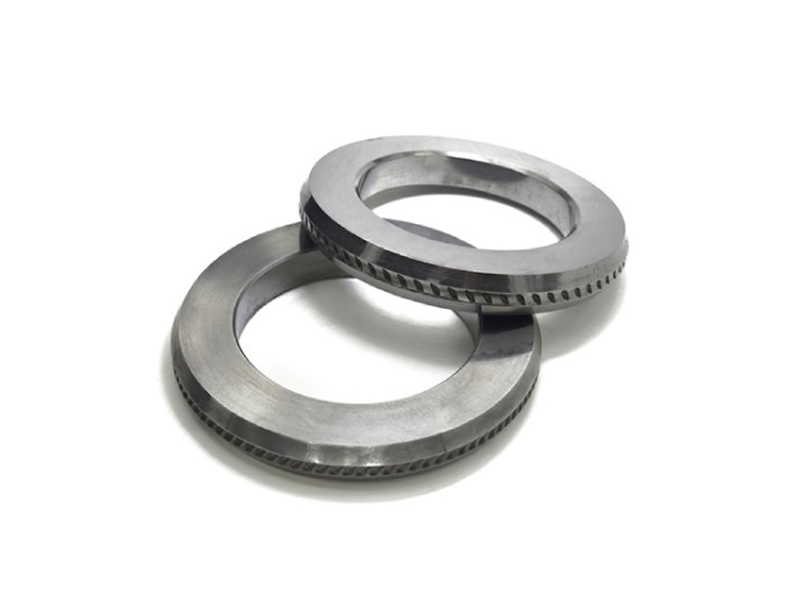With the rapid development of the steel industry, in order to improve the output of steel and improve the utilization rate and productivity of the rolling mill, reducing the shutdown times of the rolling mill, adopting a tungsten carbide roller with long service life is an important method.
What Is The Tungsten Carbide Roller
The cemented carbide roller, also known as cemented carbide roller ring, refers to a roll made of tungsten carbide and cobalt through the powder metallurgical method. The tungsten carbide roll has two types of integral and is combined. It has superior performance, stable quality, high processing accuracy with excellent wear resistance and high impact resistance. Carbide roller is widely used for the rolling of the rod, wire rod, threaded steel and seamless steel pipe, which greatly improve the operation efficiency of the rolling mill.

High Performance Of Tungsten Carbide Roller
The carbide roll has a high hardness and its hardness value varies very small with temperature. The hardness value under 700°C is 4 times higher than the high-speed steel. The elastic modulus, the compressive strength, the bending strength, the thermal conductivity are also 1 times higher than the tool steel. Since the thermal conductivity of the cemented carbide roll is high, the heat dissipation effect is good, so that the surface of the roll is under high temperature for a short time and thus the high-temperature reaction time of harmful impurities in the cooling water and the roll is shorter. Therefore, the tungsten carbide rollers are more resistant to corrosion and cold and hot fatigue than tool steel rollers.
The performance of the tungsten carbide rollers is related to the content of the bond metal phase and the size of the tungsten carbide particles. The tungsten carbide is about 70% to 90% of the total composition and the average particle size is μm of 0.2 to 14. If the metal bond content is increased or increases the particle size of tungsten carbide, the hardness of the cemented carbide decreases and the toughness is improved. The bending strength of the tungsten carbide roller ring can reach 2200 MPa. The impact toughness can be reached (4 ~ 6) × 106 J / ㎡, and the HRA is 78 to 90.
The tungsten carbide roller can be divided into two types of integral and composite according to structural form. Integral tungsten carbide roller has been widely used in pre-precision rolling and finishing stand of high-speed wire rolling mills. The composite cemented carbide roller is composited through tungsten carbide and other materials. The composite carbide rollers are cast directly into the roller shaft, which is applied to a rolling mill with a heavy load.

Machining Method Of Tungsten Carbide Roller And Selection Rules Of Its Cutting Tools
Although the tungsten carbide material is better than other materials, it is difficult to machining due to extreme hardness and it is more widely used in the steel industry.
1.Concerning hardness
When machining the tungsten carbide rolls with a hardness smaller than HRA90, select HLCBN material or BNK30 material tool for a large amount of turning and the tool is not broken. When machining the carbide roller with a hardness of greater than HRA90, a CDW025 diamond tool is generally selected or grinding with a resin diamond grinding wheel. Generally, the higher the hardness is, the material is crisper, so it is more cautious for cutting of high hardness materials and the exact reserved finishing grinding allowance.
2.The machining allowance and processing methods
If the outer surface is machined and the allowance is large, generally adopts the HLCBN material or BNK30 material to be roughly processed, then grinding with a grinding wheel. For small machining allowance, the roller can be grinded directly with a grinding wheel or profiling processed by diamond tools. In general, cutting alternative grinding can improve machining efficiency and the cutting method is more conducive to improving the production lead time.
3.Passivating treatment
When machining a tungsten carbide roller, passivating treatment is necessary to reduce or eliminate the sharpness value, for the purpose of flatness and smoothness with high durability. However, passivation treatment should not be too large, because the contact surface of the tool blade is large after passivation and the cutting resistance is also increased, which is easy to cause a crack, damaging the workpiece.

What Should Be Paid Attention To For The Production And Use Of Tungsten Carbide Roller
In recent years, the tungsten carbide rollers have gained more and more extensive applications in steel production with their excellent performance. However, there are still some issues in the production and use of carbide rolls.
1. Develop a new type of roller shaft material. Conventional ductile iron roller shafts will be difficult to withstand greater rolling power and deliver a larger torque. So high-performance cemented carbide composite roll shaft materials must be developed.
2. During the manufacturing process of carbide rollers, the residual thermal stress caused by thermal expansion between the inner metal and outer cemented carbide must be minimized or eliminated. The carbide residual thermal stress is a key factor affecting the life of the roller. Therefore, the coefficient of thermal expansion difference between the selected inner metal and outer cemented carbide should be as small as possible, while considering eliminating the residual thermal stress of the carbide roller ring through heat treatment.
3. Due to the differences in the rolling force, rolling torque, heat transfer performance on different racks, the different racks should adopt different grades of tungsten carbide rollers to ensure the reasonable match of the strength, hardness, and impact toughness.
Summary
For the rolling of wire, rod, tungsten carbide roller replacing conventional cast iron rolls and alloy steel rolls, has exhibited a lot of superiority, with the continuous development of roller manufacturing techniques and use technology, will continue to expand the applications of carbide roller rings and they will become more important in rolling machining with wider applications.















